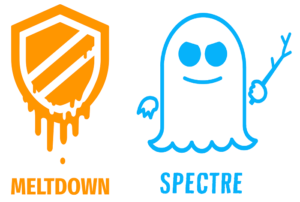 The world is abuzz with stuff about the Intel bugs – so much so that Meltdown and Spectre are explained by xkcd better to the masses than most technical articles. It’s as if the world woke up and saw a small bit of what can happen within computing systems and, unfortunately for Intel, gets branded with Intel.
The world is abuzz with stuff about the Intel bugs – so much so that Meltdown and Spectre are explained by xkcd better to the masses than most technical articles. It’s as if the world woke up and saw a small bit of what can happen within computing systems and, unfortunately for Intel, gets branded with Intel.
Did I mention Intel? Oh, don’t worry, it’s not the only brand that is getting sucked into this. Apple’s vulnerability to Meltdown and Spectre has also been admitted.
The potential is serious. But then, having seen code over the years that allowed pretty much the same thing– clearly, I fixed it where I saw it – I’m not as disturbed as the people presently flailing their arms until the next thing comes along. People will forget soon.
I’m not a chip designer, but the overall problem is pretty close to the Software Engineering issues the world presently faces.
People, generally – I still think of them as users – don’t care too much about technology. I’d say the same about management, too, in most companies – in the early 90s I said, “Management doesn’t know there is a fire until the flames are licking their asses.” This held true in just about every company I worked with until 2016, when I opted to start early on other endeavors to mitigate the risk of being an X-gen Software Engineer in a market that wanted millenial code monkeys.
Here’s the dilemma: Writing good code costs more time and money than most companies want to dedicate because, cyclically, they need to show profit faster because of increased competition in the sector.
Code monkeys are appreciated for fixing the bugs that they created in the first place, Software Engineers aren’t appreciated for the bugs that they keep from being introduced. And so, HR is always looking for code monkeys instead of true software engineers.
Venture capitalists and financiers care more about the commodity of Intellectual Property than the service of Intellectual property, mainly because people find it difficult to think of copyrighted or patented – or even company secrets – as a service. We live in an age where information and processes do not stand still; it’s not that there is Intellectual Property anymore that you can sit on – it’s that there is Intellectual Property that you have to build on.
But Intellectual Property as a commodity is how trading is done – like the statistics on a baseball card (for the Americans reading) of a living player that will be outdated the very next game. Copyrights, Patents, Trademarks, Trade Secrets – these are snapshots in time. They are not as fluid as what they represent. They are bureaucratic stop gaps to elicit profit, which has worked for a very long time because they were designed to. But what they were designed on is changing faster than this bureaucracy can accommodate.
So all of this leads to design flaws because the designs can’t possibly cover all permutations of how something can be used. It’s getting better, but by getting better it gives a false sense of security that makes the more elusive problems worse for our systems. As I wrote to someone querying about whether foreign processors would have the issue or other issues, I said, “Nothing is secure. Act like it.”
The world is changing more rapidly than the people changing it can keep up with.
Let that sink in.
And then, if you suffer some history, you’ll find it has always been this way. The future has a mind of it’s own.
The only way to mitigate things – the only true way – is for people to be more conscious of what they use. When I was growing up, because of how I grew up, I picked up the habit of understanding at least the basic functionality of everything I used. If it broke, back in the days before the Internet, in a ‘developing’ country, I had to fix it or throw it away.
Now, landfills are filled by slowed phones and antiquated technology. If I’m a dinosaur, I see the meteors and appreciate keeping things around a while when others are quick to buy the next new (untested) thing.
It’s a brave new world.
I’ll be in my garden.
